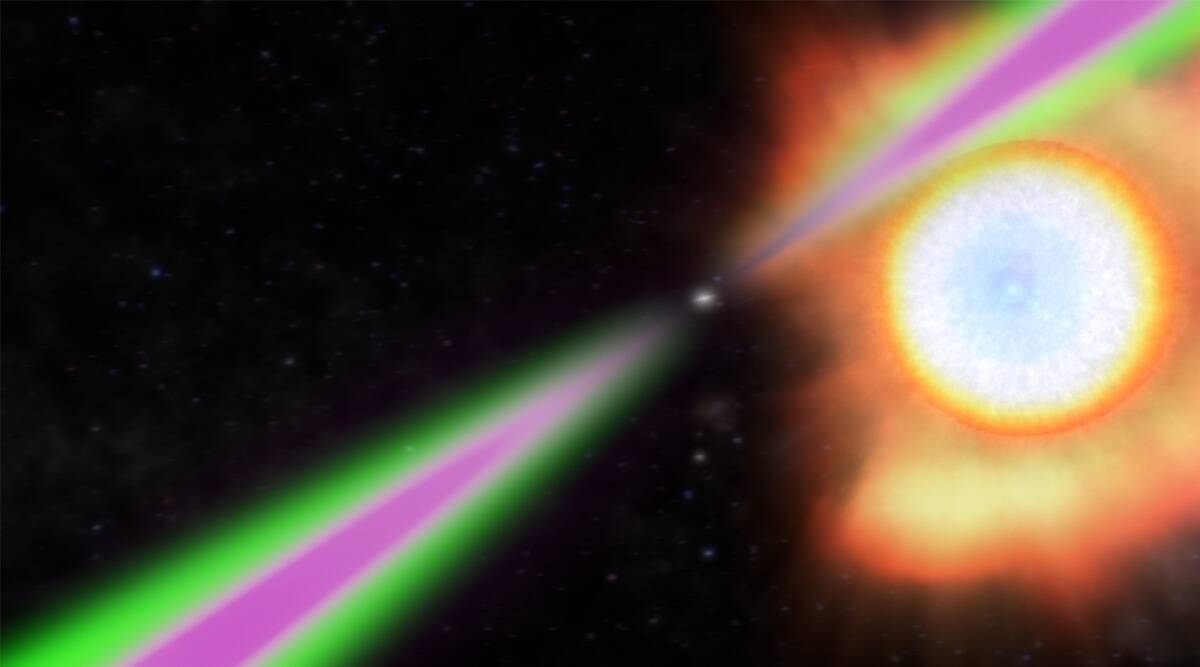Description

Disclaimer: Copyright infringement not intended.
Context
- Scientists have discovered a rare "triple black widow" system – a pair of stars that rapidly circle each other before one is consumed by the other – located some 3,000 light-years away.
Details
- The star system named "ZTF J1406+1222" has the shortest known orbit of any black widow binary i.e. 62 minutes.
- Unique feature: it contains a third star that circles the central pair every 10,000 years.
- It appears to be a new black widow binary – a rapidly spinning neutron star or pulsar that is circling and slowly consuming a smaller companion star.
- Astronomers know of about two dozen black widow binaries in the Milky Way.
Black widow binary
- The “black widow binary”— is a unique system that consists of a pulsar (rapidly spinning neutron star) that is circling and slowly consuming a smaller companion star, just like the female black widow spider does to its mater, hence the name.
- Black widow binaries are powered by pulsars — rapidly spinning neutron stars that are the collapsed cores of massive stars.
Mechanism
- Pulsars are rapidly spinning neutron stars that are the collapsed cores of massive stars.
- They have an incredibly fast rotational period, spinning around every few milliseconds and emitting flashes of high energy gamma and X-rays while doing so.
- Typically, pulsars spin down and die quickly as they burn huge amounts of energy in a short amount of time.
- Every once in a while, a passing star can ‘refuel’ them.
- As a star nears a pulsar, the latter’s gravity pulls material off the star, providing new energy to spin the pulsar back up.
- This ‘reignited’ pulsar then starts reradiating energy that strips the star further until it is completely destroyed.
- Every black widow binary discovered to date was detected due to the gamma and X-ray flashes from the pulsar.
- But for this system, "ZTF J1406+1222" researchers came upon it through the optical flashing of the companion star.
- This was possible because the companion star’s dayside (the side always facing the pulsar) can be many times hotter than the night side due to the radiation it receives from the pulsar.
- If astronomers observed a star whose brightness was changing periodically by a huge amount, it would be a strong signal that it was a binary with a pulsar.
To know about pulsar and other concepts,
Read: https://www.iasgyan.in/blogs/black-hole
https://www.iasgyan.in/daily-current-affairs/magnetar
https://www.iasgyan.in/daily-current-affairs/neutrinos-37
https://www.thehindu.com/sci-tech/science/rare-black-widow-binary-star-with-shortest-orbit-ever-identified/article65388116.ece















